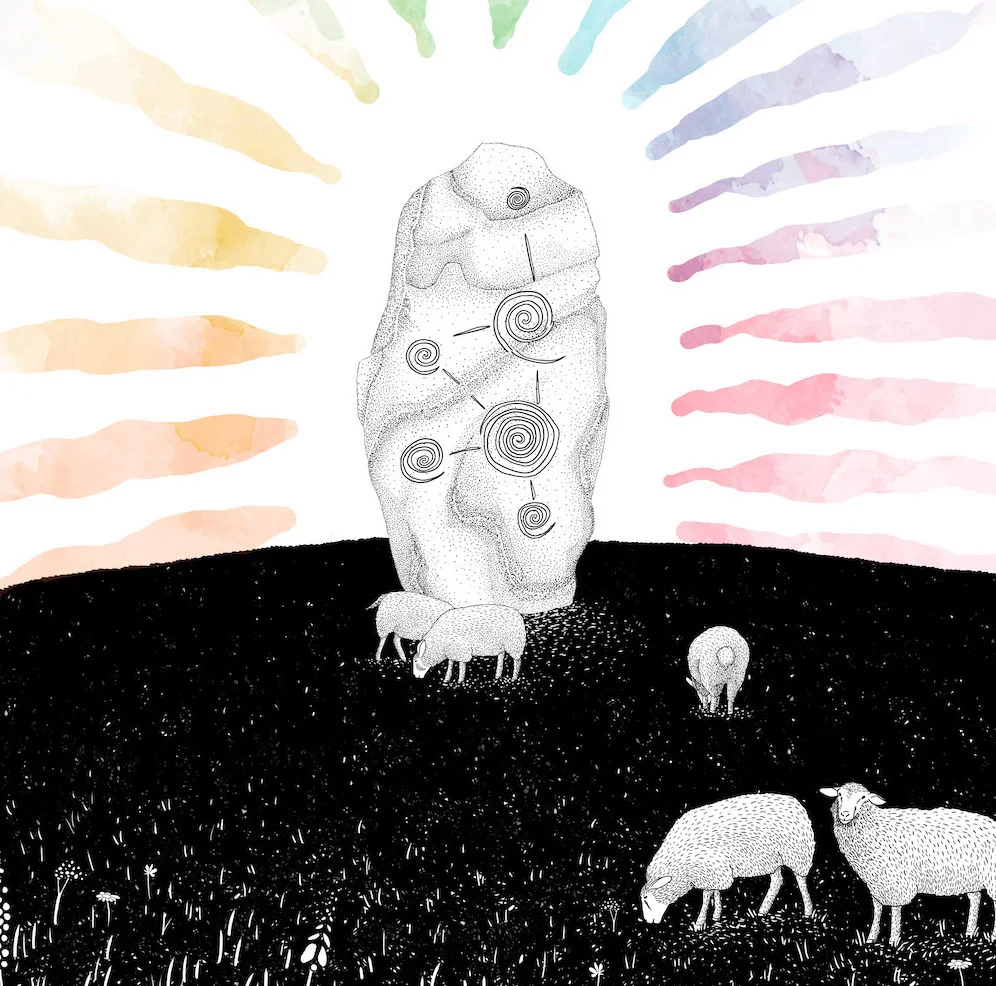Cycles of Healing

Healing is about communing with the cycles.
Like the circles of sun and tide and horizon, our lives are intimately guided, nudged and nurtured by cycles. Winter, spring, summer and fall. The dry season, the monsoon. The cycle of seed, flower, fruit. The wheel of constellations through the night sky. Maiden, mother, crone. In native north American belief systems, as in many indigenous cosmologies, everything was seen to be moving in a circle. Our lives, the heavens, and healing itself was part of the interconnected wheel of death and life. And some of the most profound medicine on earth arose from simply recognizing which cycles you were moving through.
Any imbalance asks us to make a change in the unconscious patterns of how we live our lives. True medicine begins with recognizing the subtleties of our own cycles. Noticing that every time you push yourself a bit too hard you are laid up with a migraine. Or that you always seem to get a chest cold after Christmas spent with the family. Or simply knowing that some days you will wake up sad. And it’s okay, it will pass.

As a woman, my path into holistic healing was intimately tied to recognizing my own personal cycle. Publicly, I’ve kept a bit quiet about the details of this initiation. But the first gateway to my medicine path opened when I began experiencing chronic yeast infections as a teenager. Over time, those chronic infections led to chronic muscular and finally nerve pain. It was journey of five years and some of the deepest he
aling came when I became an apprentice to the wisdom of my womb.
I dismantled all the things that kept me from courting a deeper relationship with my own hormonal, emotional and spiritual cycles. I quit birth control, I began fertility charting (a practice I still maintain now, over 100 cycles later), and I started studying herbs and natural healing. Instead of resisting the cycles of inconvenience and discomfort, I embraced them. I began to see my own hormonal cycle of budding, flowering and fading as a deeply important aspect of my identity and my healing. A homing beacon, always reminding me of what was important (rest, self-nurturment, gentleness) and inviting me back home.
For centuries, women in this culture have been unduly alienated from their natural cycles. Whether through the oppression of female folk knowledge, midwifery or herbcraft. Or simply through the demeaning, downplaying and disregarding that characterizes our society’s approach to bleeding today. But this alienation hides a much deeper fact– that our cycles themselves are healing
As Nayyirah Waheed so beautifully captures, “I bleed every month but do not die, how am I not magic?”
When women begin to connect into and honor their cycles, something pretty amazing happens. We stop working against ourselves. We let go of the paradigm of self-abashment, the patterns of belittling. We tap into a deeper and mystical understanding of just how incredibly powerful we are. In some cultures women were considered so potent while they were bleeding that they chose to separate themselves from the normal day-to-day workings of society and rest in a ceremonial space. Today, this power often remains unrecognized, but not unfelt (Case in point: A pretty kinetic friend of mine had to stop touching electronics when she bled because everything she touched would literally blow a fuse. This stuff is real).
In celebration of all the powerful women connected to me here, I wanted to offer some of my cherished gateways to help you nourish and connect: a peek at my go-to herb for helping women to heal their cycles and an invitation to inner exploration. A resource library for empowerment and healing: The Pussy Portal
S H A T A V A R I
Asparagus racemosus
In Sanskrit, Shatavari translates as “she who possesses a hundred husbands.” A gentle medicine, shatavari is a nourishing hormone balancer, immune tonic and adaptogen, as well as an aphrodisiac. This sweet and highly nutritious root has been used in Ayurvedic medicine for over 5,000 years as a rejuvenative— encouraging physical strength, youthfulness, fertility (especially in female bodied people) and improving memory. Classified in Ayurveda as a “rasayanic” herb, shatavari encourages energy, vitality, peace of mind and a deepening of love and compassion.
Used extensively for minor hormonal imbalances, shatavari can help relieve the symptoms of PMS, menopause, and pregnancy, and increase fertility. Shatavari has a soothing and overall moistening effect— this root will get your proverbial juices flowing. Shatavari is a wonderful remedy for people with fatigue, poor appetite, and anemia. This root has a long history of use as a galactagogue (or plant to help increase milk flow in lactating women). Considered a yin tonic, Shatavari is also a soothing demulcent for any digestive, urinary or respiratory irritation.
Food is the first medicine. And this medicinal asparagus root is one of the most nourishing medicinal foods on earth.
Shatavari is the first herb I recommend when women are looking to bring some gentle attention to their cycles, to nourish their bodies and rebalance their hormones.
Try 1 powdered tsp of this sweet plant ally in your daily regime to help bring glowing health from root to tip.
Need some recipe inspiration? Try some Golden Moon Milk…

GOLDEN MOON MILK recipe
1) Measure out milk (cow, goat, almond, rice etc.) into large mug of choice
2) Pour milk into small saucepan on the stove
3) Heat on medium until shimmering. Whisk in 1 tsp Shatavari powder and ½ tsp Turmeric. Stir for a minute.
4) Pour golden brew into your cup and add honey to taste. If you like pepper add a few cracks of fresh peppercorns (pepper makes the anti-inflammatory compounds of Turmeric more bio-available)
5) Sit back, sip and enjoy
Note: If the milk tastes too bitter for your taste try using more milk and honey.



